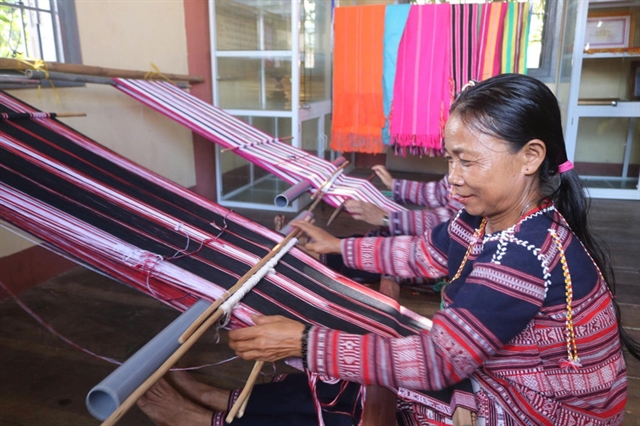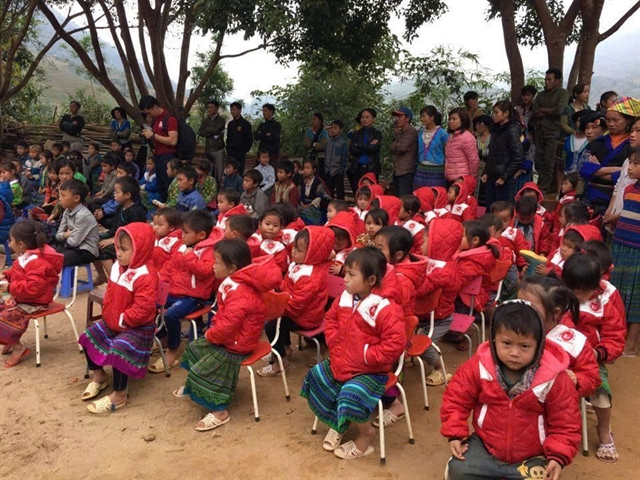 Features
Features

This year marks the 80th anniversary of the establishment of the Việt Nam League for Independence or the Việt Minh Front (May 19, 1941-2021).
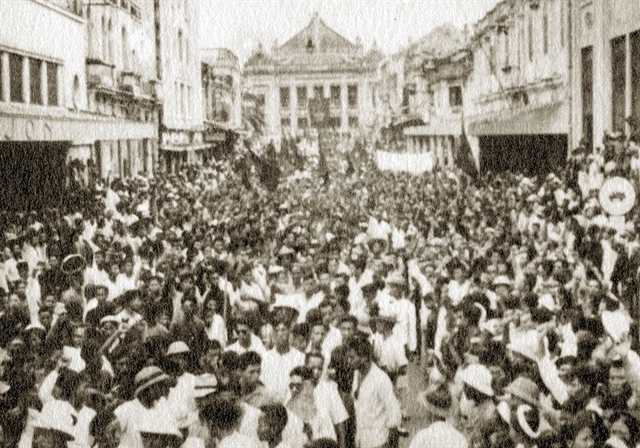
|
| A meeting to launch the rising up in arms to seize power for the people was held by Việt Minh at the Hà Nội Opera House on August 19, 1945. VNA/VNS Photo |
This year marks the 80th anniversary of the establishment of the League for Independence of Việt Nam, or the Việt Minh Front (May 19, 1941-2021).
The establishment of the front made significant contributions to the August 1945 Revolution, becoming a shining symbol of national unity and President Hồ Chí Minh’s thoughts on a broad national united front in Việt Nam.
According to late historian Trần Văn Giàu, also a communist leader during the historical revolution, “Without the strategic diversion suggested by President Hồ Chí Minh, there would have been no Việt Minh Front and without Việt Minh Front, there would have been no August General Uprising.”
Establishment
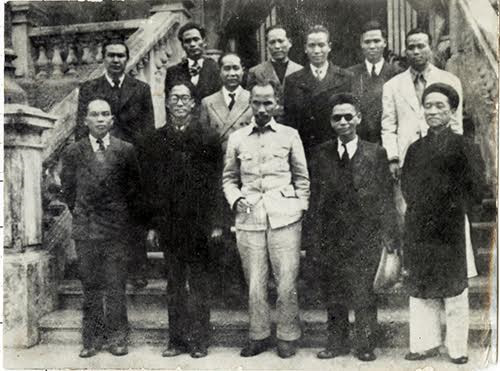
|
| The provisional government of the Democratic Republic of Việt Nam, formerly the National Liberation Committee, was established at the People's Congress convened by the Việt Minh Front in Tân Trào Commune in the northern province of Tuyên Quang in 1945. File Photo |
Realising that the situation was conducive to the revolution, Nguyễn Ái Quốc (the then name of President Hồ Chí Minh) returned to Việt Nam on January 28, 1941, after more than 30 years living abroad.
Four months later, he convened the 8th Central Committee of the Indochina Communist Party in Pác Bó Village in the northern province of Cao Bằng, deciding to change the strategic direction of the Party and affirming national liberation would be the leading task of the Vietnamese revolution.
The committee affirmed: “In the meantime, the interests of all classes must be placed under the survival of the nation and the people. In the meantime, if the issue of national liberation could not be resolved, independence and freedom for the entire nation could not be regained, then not only would the whole nation endure forever, but also the rights and interests of all the classes could not be reclaimed for thousands of years.”
Following Nguyễn Ái Quốc’s request, the committee decided to establish the Việt Nam Độc Lập Đồng Minh Hội (the League for Independence of Việt Nam, or Việt Minh in Vietnamese acronym) that aimed to gather and unite party organisations, ethnic minorities, religions, and people of all walks of life for the national cause.
On May 19, 1941, the Việt Minh Front was founded and set out the task of helping the Lao and Cambodian peoples to establish their own national fronts.
Unifying people for freedom
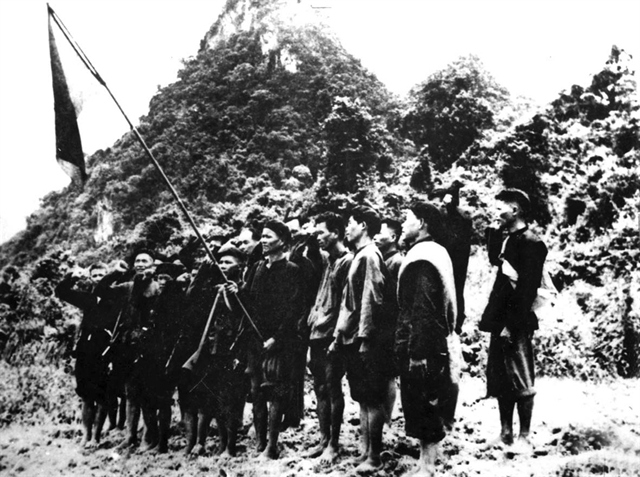
|
| This photo shows the establishment of the Vietnamese National Popular Front (or Liên Việt) on March 3, 1951. The front was a merger of the Việt Minh Front and the Vietnamese National Popular League. The organisation played a key role in rallying and mobilising the population in Việt Nam’s war of resistance against the French in 1945-54. Photo tapchimattran.vn |
On October 25, 1941, Việt Minh announced its declaration, programme and charter.
Thanks to the policies of the 8th Central Committee Conference and determination of the Party, the Việt Minh movement quickly spread and Cao Bằng Province became the centre of the national salvation movement.
In other provinces in the north and central regions, the Việt Minh movement began to appear from the end of 1941 to 1942.
By mid-August 1945, the high tide of resistance against the Japanese troops reached its peak. Under the national solidarity flag, the Party and Việt Minh leadership took advantage of national strength and determined to rise up to revolt.
Prior to the national uprising to seize the power from the French and the Japanese forces, a people’s congress was convened by the Việt Minh leadership at Tân Trào Commune in the northern province of Tuyên Quang from August 17 to 18, 1945.
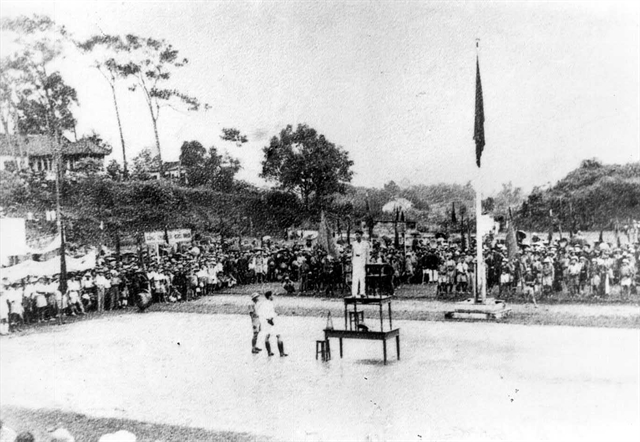
|
| On August 20, 1945, after overthrowing the Japanese-backed government, the revolutionary masses in the northern province of Thái Nguyên held a meeting at the provincial stadium to declare the establishment of the Việt Minh Government. VNA/VNS Photo |
The congress appointed the National Liberation Committee (or the interim revolutionary government). Chaired by President Hồ Chí Minh, the congress agreed on the orientations of the Indochina Communist Party and the Việt Minh Front to lead the public in an uprising, take back the power, organise a national liberation committee, and select a national flag and national anthem.
Under the leadership of the Party and the Việt Minh front, the Vietnamese people nationwide were unified in the uprising to seize back power. Within nearly two weeks, the Japanese-backed government completely collapsed, and provisional People's Committees were established.
President Hồ led the revolution to its highest peak and the Democratic Republic of Việt Nam was formed on September 2, 1945.
According to Chu Đức Tính, former director of the Hồ Chí Minh Museum, the establishment of Việt Minh was a continuation of long-term preparation for the struggle for national independence.
“Via the Việt Minh Front, the Party created a well-organised organisation of the population that served as the foundation for the uprising to take power during the August 1945 Revolution,” he said.
Similarly, Nguyễn Viết Chức, of the Central Committee of the Việt Nam Fatherland Front, said the Việt Minh Front unified and led the Vietnamese people in the fight for national independence and freedom.
“The successful August 1945 Revolution leaves many lessons, the most important of which is that the Party assigned the responsibility to lead the masses of the people to stand up for power to its 'partner' – Việt Minh, a national united front."
The national united front in different periods of Việt Nam's revolution and development took different names, and is now the Việt Nam Fatherland Front.
Since its establishment, the front has always fulfilled its historical mission to gather and unite people from all walks of life to defeat all aggressors threatening the cause of national construction and defence.
National unity remains a key factor in ensuring the success of the renewal process and national industrialisation and modernisation. National unity will contribute to building a rich people, a strong country, and an equitable, democratic, and civilised society, as President Hồ Chí Minh wished. VNS



